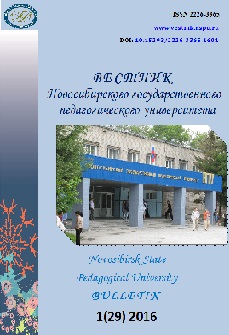Морфофункциональные показатели и физическая подготовленность студенток 1–2 курсов технического университета, занимающихся аэробикой
Morphological and functional characteristics and physical preparedness of the first year and second year female students of technical university engaged in aerobics
Author(s): Vladimir Mihailovich Klimov, Viktor Borisovich Rubanovich, Roman Idelevich AizmanSubject(s): Essay|Book Review |Scientific Life, Higher Education , Experimental Pschology
Published by: Новосибирский государственный педагогический университет
Keywords: Biology; morphology; morphological and functional reserves; physical activity; Physical Education; motivation; physical preparedness
Summary/Abstract: The characteristics of the physical development and functional status of the first year and second year female students are presented in this article. The students were engaged in aerobics during two academic hours two times a week. The conditions and scope of classes corresponded with the State Standard of education for the discipline "Physical Education" and the choice of sport specialization was carried out by the students independently. It is shown that the majority of the studied and calculated parameters of physical development (height, body weight, circum-ference of chest, lung capacity, the strength of the hands, Ketle and pulmonary indexes); the functional state of the cardiovascular system (blood pressure, heart rate at rest and after stand-ard physical load, indicators of the effectiveness of blood circulation and heart activity); physi-cal working capacity, physical fitness, measured by the level of endurance and the development of power-speed; as well as the integral level of physical health and physical preparedness, cal-culated on the sum of all tests results, were at the level of average normative values for a given age, sex and social group. We detected a few differences in physical development and morpho-logical and functional reserves between first and second year students but the level of physical preparedness of the second year students was significantly higher. The obtained data allow us to conclude that aerobics in the regime of training sessions provides a supporting effect for the functional state of the students during their training and increases their physical preparedness.
Journal: Вестник Новосибирского государственного педагогического университета
- Issue Year: 6/2016
- Issue No: 1
- Page Range: 109-120
- Page Count: 12
- Language: Russian

